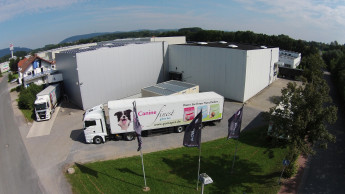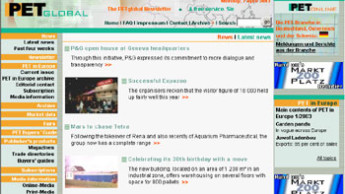

The images of the destruction left behind by the natural disasters in Japan were beamed around the world. The extensive damage and threat of a nuclear catastrophe have also affected the country’s pet product market, with a calamitous collapse in the aquarium segment in particular.
“Like a scene from a horror movie.” That is how Kenji Sakamoto, managing director of Eheim Japan, describes the day of the disaster. “Our office is 25 km from the centre of Tokyo, and when the earthquake started, we evacuated the building immediately and escaped into the open air. Thanks to special earthquake protection we were lucky and neither the building nor the people suffered any real injury.” One consequence of the earthquake, however, was that the region was left without gas or water for several weeks. “This caused people to become very demoralised over time,” recounts Sakamoto. The Eheim manager attributes the collapse in sales figures for aquatics products that has since occurred in the east of Japan to this lack of confidence. “Sales in cities like Yokohama, Tokyo and Sendai fell drastically in March and April. In May we saw a slight recovery in the market and we hope that we will once again attain the pre-disaster sales level by the end of the year.” Things look better in the west of Japan than in the north of the country. “In Nagoya, Osaka and Hiroshima, for example, we have maintained our sales figures at the pre-disaster level.” According to Sakamoto, the earthquake had a big impact on fishkeeping as a hobby in general: “Many people in Japan don’t know whether to continue with their hobby with large aquariums. The danger of tanks overflowing or breaking in a further earthquake is too great for many. I believe that there will be a substantial shift towards small tanks containing 15-30 l of water, therefore.” As a result, there must be a stronger focus on the nano segment in future to attract new customers. Every cloud has a silver lining On the other hand, there’s good news with regard to Eheim production in Japan. Sakamoto says that there have been no interruptions here and manufacturing is continuing as normal. “But since many of the products were stored in warehouses in the north of the country that were damaged by the disaster, we have now moved them to safer warehouses in the south,” he stresses. In spite of the massive destruction wreaked, Sakamoto does not fear far-reaching consequences for Eheim’s success in Japan. “We amassed considerable experience in the earthquake in Kobe in 1995 as to how the management handles such a disaster. I am confident, therefore, that we will return to the normal sales figures in 2012.” This positive attitude is shared by the company Kyorin Co. Ltd., which manufactures and markets the well-known koi food…
Related articles
Read also

 Menü
Menü






 7-8/2011
7-8/2011












 Newsletter
Newsletter